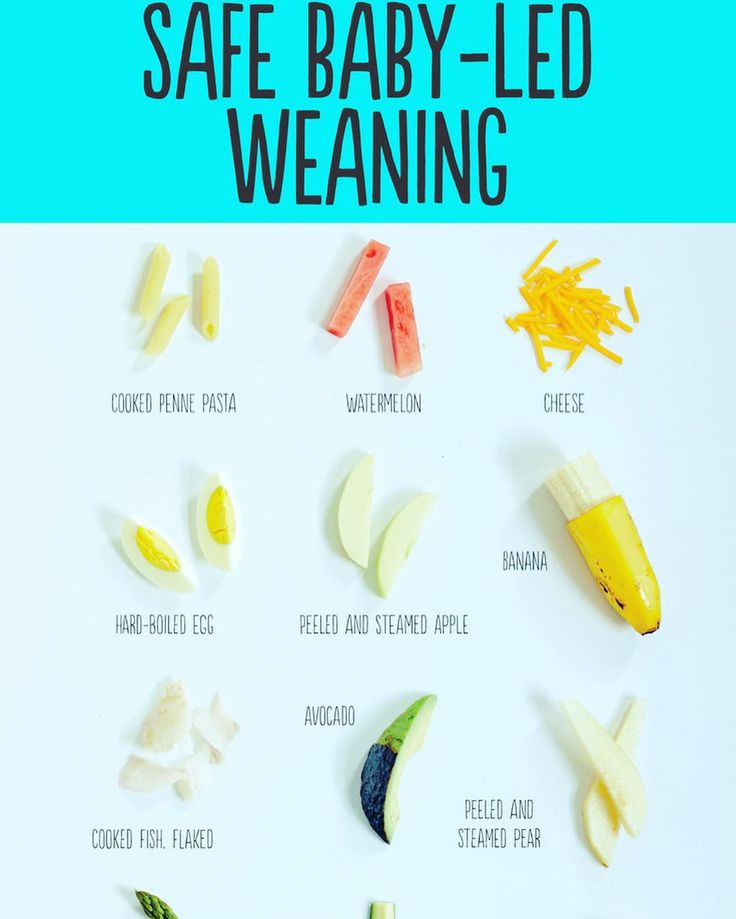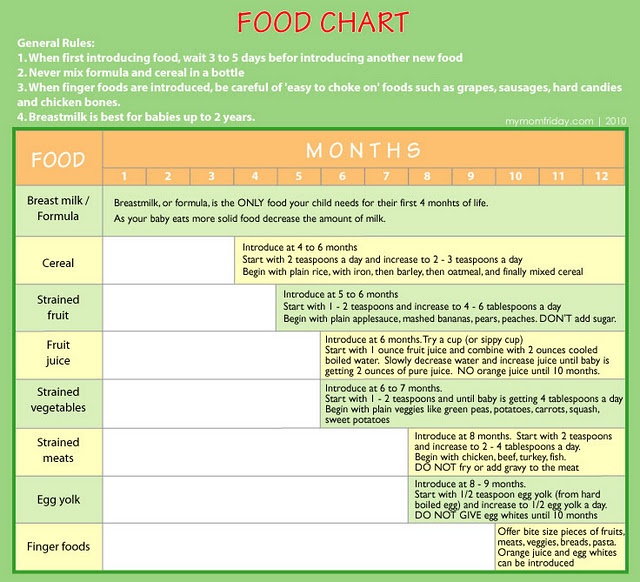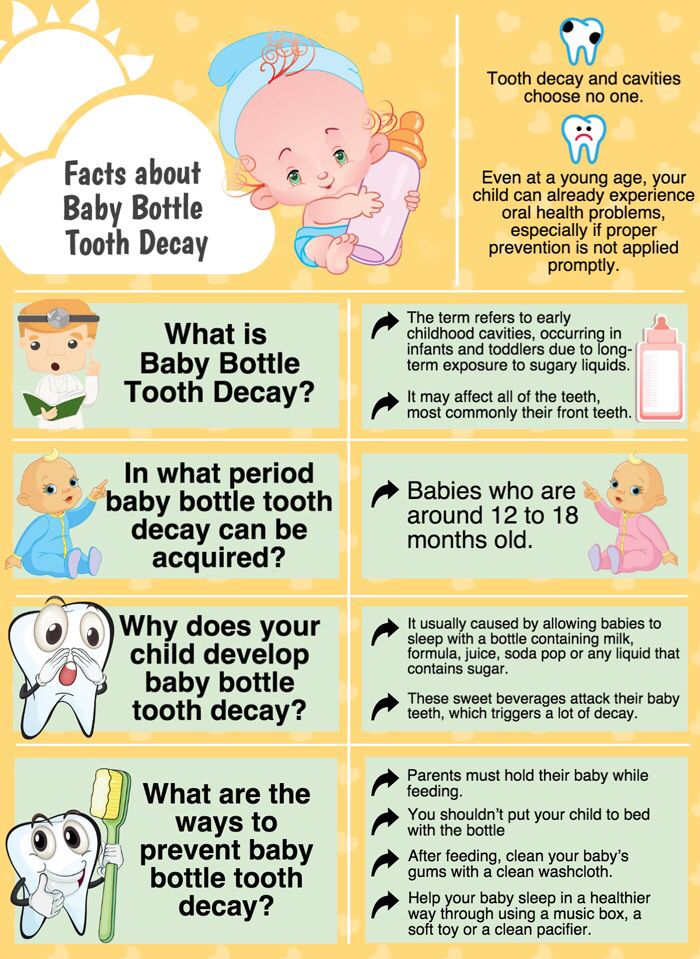Best way to combination feed baby
How to combine breast and bottle feeding
It can take several weeks for you and your baby to feel happy and confident with breastfeeding.
Once you've both got the hang of it, it's usually possible to offer your baby bottles of expressed milk or formula alongside breastfeeding.
This is sometimes called mixed or combination feeding.
Why combine breast and bottle?
You may want to combine breastfeeding with bottle feeding if you:
- are breastfeeding and want to use a bottle to offer your baby some expressed breast milk
- want to breastfeed for some of your baby's feeds, but give bottles of formula for 1 or more feeds
- are bottle feeding your baby and want to start breastfeeding
- need to leave your baby and want to make sure they have some milk while you're away
Introducing formula feeds can affect the amount of breast milk you produce. There is also a small amount of evidence to show babies may not breastfeed as well because they learn to use a different kind of sucking action at the bottle than at the breast.
These things can make breastfeeding more difficult, especially in the first few weeks when you and your baby are still getting comfortable with breastfeeding.
Your breastmilk supply will usually not be affected if you start bottle feeding your baby when they are a bit older, you are both comfortable with breastfeeding, and you breastfeed every day.
Introducing formula feeds
If you're combining breastfeeding with formula feeds both you and your baby can carry on enjoying the benefits of breastfeeding.
If you choose to introduce infant formula:
- it's best to do it gradually to give your body time to reduce the amount of milk it makes – this helps lower your chance of getting uncomfortable, swollen breasts, or mastitis
- if you're going back to work, start a few weeks beforehand to give both of you time to readjust
- if your baby is 6 months old or more and can drink milk from a cup, you may not need to introduce a bottle at all
For more information, see drinks and cups for babies.
Giving your baby their first bottle
It may take a while for a breastfed baby to get the hang of bottle feeding, because they need to use a different sucking action.
- it usually helps to give the first few bottles when your baby is happy and relaxed – not when they're very hungry
- it may help if someone else gives the first bottle feeds, so that your baby is not near you and smelling your breast milk
- you might want to try using a different position for bottle and breastfeeding
See more advice on how to bottle feed.
Restarting breastfeeding
If you want to start breastfeeding more and give your baby fewer bottles, it's a good idea to ask your midwife, health visitor or breastfeeding supporter for support.
These tips may help too:
- Hold and cuddle your baby as much as possible, ideally skin to skin. This will encourage your body to make milk and your baby to feed.
- Express your breast milk regularly. Expressing releases the hormone prolactin, which stimulates your breasts to make milk. About 8 times a day, including once at night is ideal. It may be easier to express by hand to begin with – your midwife, health visitor or breastfeeding supporter can show you how.
- Try bottlefeeding while holding your baby skin to skin and close to your breasts.
- If your baby is latching on, feed little and often. Do not worry if your baby does not feed for long to begin with. See tips on how to get your baby properly positioned and attached.
- Choose times when your baby is relaxed, alert and not too hungry, and do not force your baby to stay at the breast.

- Decrease the number of bottles gradually, as your milk supply increases.
- Consider using a lactation aid (supplementer). A tiny tube is taped next to your nipple and passes into your baby's mouth so your baby can get milk via the tube as well as from your breast. This helps to support your baby as they get used to attaching to the breast. Your midwife, health visitor or breastfeeding supporter can give you more information.
See more tips on boosting your milk supply.
Help and support with mixed feeding
If you have any questions or concerns about combining breast and bottle feeding:
- talk to your midwife, health visitor or breastfeeding supporter
- call the National Breastfeeding Helpline on 0300 100 0212 (9.30am to 9.30pm, every day)
- find breastfeeding support near you
Video: why combine breast and bottle feeding?
In this video, 3 mothers discuss ways to combine breast and bottle feeding.
Media last reviewed: 22 March 2020
Media review due: 22 March 2023
Page last reviewed: 8 October 2019
Next review due: 8 October 2022
Combination Feeding: When to start combo feeding your baby and how to make the introduction
Our editorial team personally selects each featured product. If you buy something through our links, we may earn an affiliate commission, at no cost to you.
If you’ve been exclusively breastfeeding since your baby was born, the idea of combination feeding may be new to you. We don’t hear that much about combo feeding, but it’s something we should all be talking about! Combo feeding a baby can be a lifesaver. Literally, it helps when supply is low or when fresh breast milk is unavailable. Combo feeding can also be a savior for mom’s mental health. The question is, how do you introduce combo feeding and how do you find the combo feeding schedule that works best for your family?
To start from the beginning, combo or combination feeding simply means giving your baby both breastmilk and infant formula. If the word “formula” scares you, don’t be alarmed. Many exclusively breastfeeding moms fear the use of formula, and worry that it will somehow compromise their bond with their baby, or their baby’s nutrition.
If the word “formula” scares you, don’t be alarmed. Many exclusively breastfeeding moms fear the use of formula, and worry that it will somehow compromise their bond with their baby, or their baby’s nutrition.
The reality is, combination feeding is pretty common. Many moms begin by exclusively breastfeeding their baby and switch to combination feeding within weeks or further down the road. Some parents make the decision to begin combination feeding with their baby as a newborn. Some get here as a last resort. Often times the maternal health of mom or the health of the baby dictates that combination feeding become a necessity.
While we know that breast milk is the preferred method of nutrition for infants up to one year there may be instances when combination feeding is a better fit for a family.
Breastfeeding, even just once a day, is worth it.
Jadah Parks Chatterjee, Lactation Consultant
Table of Contents
- Reasons to try combination feeding
- When can you start combination feeding?
- Combination feeding newborn
- How to introduce formula to your baby
- Combination feeding schedule
- What if combo feeding doesn’t work?
- Conclusion to combo feeding
We all start out with a picture in our minds of how we’d like to feed our babies. Whether we imagine exclusively breastfeeding for 24 months, pumping exclusively, or combining formula and breastmilk, what we have planned usually does not go exactly as planned.
Whether we imagine exclusively breastfeeding for 24 months, pumping exclusively, or combining formula and breastmilk, what we have planned usually does not go exactly as planned.
As such, there may be a myriad of reasons why you begin combination feeding:
- You’re having issues with your supply. You’ve tried all the things; the herbs, the lactation cookies, the additional feedings, the pumping, and you still aren’t able to keep up with your baby’s demands.
- You go back to work. Although an ideal scenario is one that involves you being allowed numerous pump breaks and a safe place to pump, some jobs just don’t lend themselves to comfortable pumping. If you aren’t able to pump at work, combination feeding might be a good idea.
- You’re ready to stop pumping. Maybe you’re doing great with morning and evening nursing, but you’d really like to wean from pumping during the day.
 If so, you’ll need something to make up for the breastmilk you aren’t pumping.
If so, you’ll need something to make up for the breastmilk you aren’t pumping.
- Your baby isn’t gaining weight as she should. While this could be more of a supply issue, if your baby isn’t gaining weight like she should, her primary care provider may suggest you supplement with formula. In fact, the World Health Organization is clear that this is a situation when infant formula would be deemed medically necessary.
Shop Bobbie Organic Infant Formula
Bobbie Organic Infant Formula is a USDA Organic, EU-style infant formula that meets all FDA requirements. It is a complete nutrition milk-based powder modeled after breast milk and is easy on tummies. It is non-GMO and doesn't have corn syrup, palm oil, or maltodextrin. Learn more about Bobbie.
Shop Bobbie
When can you start combination feeding?Combo feeding assumes you are already breastfeeding successfully. In fact, establishing a good breastfeeding bond and routine is important before you introduce any kind of combination feeding. Feeding your baby breastmilk has considerable advantages that have been well documented.
In fact, establishing a good breastfeeding bond and routine is important before you introduce any kind of combination feeding. Feeding your baby breastmilk has considerable advantages that have been well documented.
Especially early on, breastmilk is beneficial for your baby’s:
- Oral development
- Immune system
- Ability to avoid allergies
- Overall nutrition
- Bonding time
Once breastfeeding has been well-established, you can safely introduce combination feeding.
Combination feeding newborn
There’s really no specific age that is best for introducing formula, bottles, or combination feeding; it is completely up to your goals and your baby’s health. You could start combo feeding your newborn, even by replacing formula for your nighttime feedings. Or, if you are returning to work after three months of maternity leave, you can get started on combination feeding several weeks prior to beginning work.
The longer you can keep your baby on your breastmilk only, the more health benefit she will receive from your milk. This doesn’t mean she will not receive benefit and nutrition from formula, it simply means she’ll receive the greatest benefit from breastmilk by having it as long as possible.
This doesn’t mean she will not receive benefit and nutrition from formula, it simply means she’ll receive the greatest benefit from breastmilk by having it as long as possible.
Babies are demanding, and they aren’t a huge fan of change. As such, it’s best to approach the introduction to formula slowly, over a period of time, and only when your baby is relaxed and hungry.
For instance, if you are planning to return to work, waiting until the week you return to introduce a bottle and formula isn’t a good idea. This is only going to create stress for both you and your baby. This is especially important if your baby has never taken a bottle before.
Your caretaker will need to be able to successfully feed your baby in your absence while you are at work, so it’s important you set your baby and caretaker up for success by introducing the bottle sooner rather than later.
You may want to start by replacing one feeding a day with a bottle and formula.
Essentially, you’d skip one nursing session and offer a formula bottle instead.
- Give this bottle while your baby has already been awake. First thing in the morning works well as they are hungry, awake and relaxed. You don’t want them to be overly hungry.
- Be patient. Don’t give up! Some babies struggle when switching from breast to bottle, and that is okay and normal. Your baby will take a bottle when she is hungry, so don’t worry that she will not be fed when you are not able to nurse her.
- Focus on your baby when bottle feeding. Bottle feeding is still a bonding experience, and it’s important you keep the feeding bond consistent. Focus on your baby the entire time you are feeding her to ensure the feeding bond is retained.
- Be specific with your formula. You have a lot of options when it comes to baby formula. Pick the one that has quality ingredients that are important for your baby’s health and doesn’t contain ingredients she doesn’t need.
 If the formula you pick doesn’t work for your baby, switch to another. Her primary care provider can help you determine a good formula for her use.
If the formula you pick doesn’t work for your baby, switch to another. Her primary care provider can help you determine a good formula for her use.
- Do keep formula feeding time and nursing time separate. Remember, babies don’t like change. It will be important for your baby to know she can expect her routine. Stick with bottle feeding times and nursing feeding times.
Combination feeding schedule
This is the routine that works specifically for you and your family. Many people like to replace their nighttime bottle with formula so that mom can get a little sleep. Working moms often prefer to extend breastfeeding by nursing when they’re home at morning and night, yet replace the daytime feedings with bottles. Plan this with your partner and/or caretaker to figure out the best routine for your specific schedule.
What if combo feeding doesn’t work?It’s probably every breastfeeding working mother’s nightmare: what if combination feeding doesn’t work?
Let’s look at some of the most common fears associated with combination feeding and how to tackle them.
What if my baby won’t take a bottle? You’ve tried. Your partner has tried. Your mom has tried. Your baby just won’t take a bottle. After a few minutes of trying, you simply give up and offer the breast. We understand. It’s frustrating. But, we promise, your baby will take a bottle. You may need to switch to a different flow bottle or different type of nipple. If you’ve tried all the nipples, all the flows, and are still stuck, speak to your baby’s primary care provider about other options.
What if my baby hates formula? Babies are picky, but not typically picky when it comes to formula. If your baby outright refuses a particular brand, try a different one. Try giving your baby her formula just slightly warmer than room temperature to see if she will take it. If you are still having issues, contact her primary care provider.
What if my baby refuses the breast after having the bottle? If you do experience any kind of issue with nursing after beginning combination feeding, speak to your lactation consultant to get help. There’s always a way to get back on track with nursing, you just need a little guidance. In fact, if you are going back to work and will be away from your baby all day, you may find your baby nurses better in the mornings and evenings.
There’s always a way to get back on track with nursing, you just need a little guidance. In fact, if you are going back to work and will be away from your baby all day, you may find your baby nurses better in the mornings and evenings.
Combination feeding is a great way to introduce formula to an exclusively breastfed baby over a period of time. It can help fill in nutritional gaps for moms who have issues with their supply, and can also ease the pressure of returning to work and pumping numerous times a day and night.
If possible, you should always wait until breastfeeding is fully established before introducing formula and a bottle to your baby, but know that if you have need to introduce it sooner, it is possible and can be successful.
If you need guidance, reach out for support to your lactation consultant, and always keep your baby’s primary care provider in the loop of any dietary changes you are making with your baby.
Shop Bobbie Organic Infant Formula
Bobbie Organic Infant Formula is a USDA Organic, EU-style infant formula that meets all FDA requirements. It is a complete nutrition milk-based powder modeled after breast milk and is easy on tummies. It is non-GMO and doesn't have corn syrup, palm oil, or maltodextrin. Learn more about Bobbie.
Shop Bobbie
Sources:
Acceptable Medical Reasons for use of Breast Milk Substitute | WHO
11 Benefits of Breastfeeding for Both Mom and Baby | Healthline
Formula Feeding | Healthy Children
The content on this site is for informational purposes only and not intended to be a substitute for professional medical advice, diagnosis or treatment. Discuss any health or feeding concerns with your infant's pediatrician. Never disregard professional medical advice or delay it based on the content on this page.
Switching to formula or combination feeding - Mom's Club.
Adding Formula
If you decide to switch exclusively to formula feeding, you can do so at any time. However, if you want to combine breastfeeding and formula, it's best to wait around 6-8 weeks for breastfeeding to begin without any problems. Regardless of your choice, adding formula will reduce the amount of breast milk you produce - a process that is very hard to reverse. It takes up to 7 days for the body to adapt to producing less milk.
Gradually reducing the number of breastfeeds - one per week - will give your body time to learn to produce less milk. It will also prevent breast engorgement and milk leakage. If you feel like your breasts are full, try expressing some milk to ease the pressure.
Which feeding should be stopped first?
When to breastfeed and when to bottle is your choice. The main thing is to be consistent. This will help your body adjust to the new daily routine. If you choose not to feed at night, for example, your body will stop producing milk at that time of day.
Remember to take things slowly and your body needs time to adjust. Your baby may also need some time to get used to as the latex pacifier will taste and feel different from your nipples.
Bottle introduction
Some babies take longer to get used to the bottle. If your baby is not shift tolerant, you can try the following:0005
Warm up formula before feeding - some babies prefer milk to mother's body temperature milk.
Use assorted pacifiers - your baby may prefer a specific shape and texture
Hold the baby to the breast, but look away from you so that he will be the least distracted
Use toys or music to distract the baby during feeding
Developing a daily routine that works for both of you will require some time, so be patient. If you're only bottle-feeding, getting enough skin-to-skin contact while feeding will help you strengthen your emotional connection.
What's next?
Add the following items to your shopping list:
Aptamil® 2, 3, 4 is the No. 1 brand recommended by Latvian healthcare professionals!*
Breast milk provides everything necessary for the full growth and development of the baby and is one of the greatest wonders of nature
DETAILS
Bottle Feeding: Equipment
Before bottle feeding you will need to purchase at least 6 baby bottles. Most...
DETAILS
Hospital bottle feeding
Not all maternity wards can provide infant formula and feeding equipment.
DETAILS
Oils in milk formulas: a nutritionist explains what to look for
An integral part of the human diet are various oils that ...
DETAILS
How HMOs help make breast milk the best food
Breastmilk is the best nutrition for your baby, laying the foundation for his development and healthy immunity.
MORE DETAILS
Breastfeeding as the best method of healthy growth and development of children - "Ingushetia" - Internet newspaper
emergency situations, including during the Covid-19 pandemic.Fortunately, the latest research data has shown that the Covid-19 virus has not been found in breast milk, but nursing mothers, on the advice of doctors, need to be aware of the risks associated with the pandemic and follow certain rules when breastfeeding.
According to the WHO European Office for the Prevention and Control of Noncommunicable Diseases, breast milk is the best source of nutrition for infants, including infants whose mothers have contracted the new coronavirus infection.
“To date, the virus that causes Covid-19 has not been found in breast milk. However, since the disease is new, this statement is based on limited research,” the document says. This suggests that an infected mother should take proper precautions and breastfeed her child.
Also in a recent study in Wuhan, scientists collected and tested breast milk samples (at first lactation) from six women who had Covid-19during pregnancy, and all samples tested negative for the virus.
However, according to WHO, more research is needed to confirm these results. The main risk of transmission appears to come from the respiratory tract of the infected mother. And it is very important that scientific experience shows that the course of Covid-19 disease in infants and young children, as usual, is mild.
In the years when the idea of the "World Breastfeeding Week" (beginning 90s of the last century), people could not even think that such a viral scourge called Covid-19 would come, in front of which everyone would be equal and equally helpless. But, nevertheless, the relevance in the healthy growth of children has not become less significant and continues to be as serious as it was three decades ago.
The annual Summer Breastfeeding Support Week is held around the world starting on August 1st. This action was conceived as one of the strategic methods to promote and support natural feeding of children in order to revive and renew the lost tradition of breastfeeding.
This action was conceived as one of the strategic methods to promote and support natural feeding of children in order to revive and renew the lost tradition of breastfeeding.
The purpose of the action is also to inform women about the benefits of breastfeeding for the health of the child, because many modern mothers are increasingly refusing breastfeeding and switching to artificial feeding.
The organizers of the holiday remind them in various ways of the natural nature and the need to follow this process, and that all activities within this issue should contribute to improving the survival rate of infants and young children. Therefore, the program of the action, according to the coordinators of the movement, should ensure the improvement of infant nutrition, their growth and development, as well as the promotion of health.
As we have found out, the Ministry of Health of the Republic of Ingushetia plans to conduct health education work with the population about the benefits of breastfeeding this year, as well as organize thematic exhibitions of popular science literature in libraries and distribute memos, booklets, leaflets about the benefits of breastfeeding in medical institutions. feeding.
feeding.
Some events on this topic have already been held. For example, in the outpatient clinics of the rural settlements of Alkhasty, Barsuki, Surkhakhi and others, conversations were held with expectant mothers and women in childbirth to inform the female part of the population about holding events dedicated to the World Week of Support and Encouragement of Breastfeeding.
Also, the regional health department reached an agreement with the heads of the media to post information on their portals about the importance and necessity of feeding children with healthy and environmentally friendly food.
For security reasons, it was decided to hold mass events this summer, taking into account the restrictions associated with the threat of the spread of coronavirus infection caused by Covid-19. Therefore, priority is given to outdoor activities in compliance with social distance and personal protection rules.
A new WHO study estimates that three out of five newborns are not breastfed in the first hour of life, increasing their risk of disease and reducing their chance of further development. After all, only breastfeeding gives children the best start in life.
After all, only breastfeeding gives children the best start in life.
Doctors have shown that newborns who received breast milk in the first hour of life are more likely to survive. Even a delay of several hours after the birth of a child can have life-threatening consequences.
In addition, we all understand that physical contact between mother and child, along with natural nutrition, called the "first vaccine" of the baby, stimulates the body of the newborn to produce the necessary enzymes.
WHO recommends exclusive breastfeeding of infants up to six months of age, beginning as early as one hour after birth and being "on demand" of the baby, not any contrived system, and then continuing breastfeeding with appropriate complementary foods up to two years or older. Bottles or pacifiers should be avoided.
Good maternal nutrition is essential to reduce the risk of NCDs for both mothers and their babies. And the action's strategy is evidence-based, highlighting the importance of giving every mother the support she needs to fulfill her important mission.
Any doctor will tell you that breastfeeding is the healthiest food for a child in the first months of life, since mother's milk contains a complete set of essential vitamins and elements that contribute to the normal development of the child.
Our permanent consultant, pediatrician Zalina Mutaliyeva, shares the same opinion.
“Breastfeeding is by far the best nutritional option for a baby,” says Dr. - Mother's milk contains rich nutrients and antibodies that protect the baby from infection, allergies and other common childhood diseases such as diarrhea and pneumonia (two leading causes of infant mortality worldwide). Also, the composition of mother's milk includes special substances that help the child fall asleep faster and calm down. And sleep is one of the main conditions for the healthy growth of children.
Compared to formula, breast milk is easier to digest, so the baby suffers less from gas, diarrhea and constipation. And breastfeeding saturates the child's body with essential vitamins, minerals, acids that increase immunity, and keeps the body in good shape, gives vigor and strength, eliminates fatigue and prevents fatigue.
With the mother's milk, the child begins to properly stimulate the activity of digestion, the work of the stomach and stool are adjusted. It has been scientifically proven that mother's milk strengthens teeth, bones and nails, has a beneficial effect on the functioning of blood vessels and the heart, on the state of nerve cells, and also speeds up recovery, helping with various diseases. In addition, breastfeeding has a beneficial effect on the psychological development and emotional state of the child and even forms the correct bite.
Thus, we can safely state that breast milk is a unique nutrition that satisfies the needs of a newborn 100%. It includes over five hundred nutrients, is easily absorbed and digested.
According to Zalina Magometovna, among other things, breastfeeding establishes bodily and psychological contact between the baby and mother, and successful lactation has a beneficial effect on the hormonal background of a woman. It helps to recover faster after childbirth and establish a relationship with the child, while maintaining the health of the nursing mother and her psychological and emotional state.
“Breastfeeding has also been shown to reduce the risk of breast cancer, type 2 diabetes and other diseases,” says Dr. “Thus, it can be argued that breastfeeding contributes to the health of both mother and baby at the same time.”
Agree, breastfeeding is very convenient: milk does not need to be specially prepared or heated. Moreover, nothing can replace breastfeeding for a newborn baby. Mixtures can be used, but only as a last resort, if the child for some reason cannot receive mother's milk.
After six months and until the mother has milk left, the child can be gradually transferred to a combined diet, that is, breast milk is supplemented with complementary foods. Such a scheme will allow you to gradually move away from breastfeeding without harming the health of the child.
Considering that breastfeeding is an important stage in the life of mother and child, a woman should not refuse to breastfeed unless there is a good reason for it. Remember, no artificial breast milk substitute can compare with mother's.











